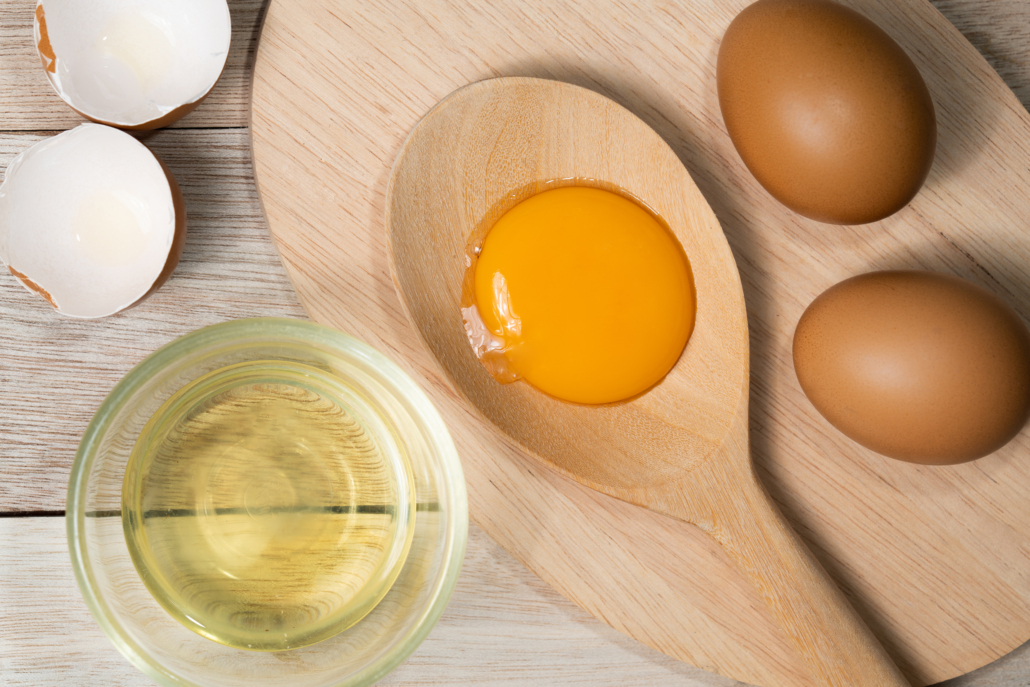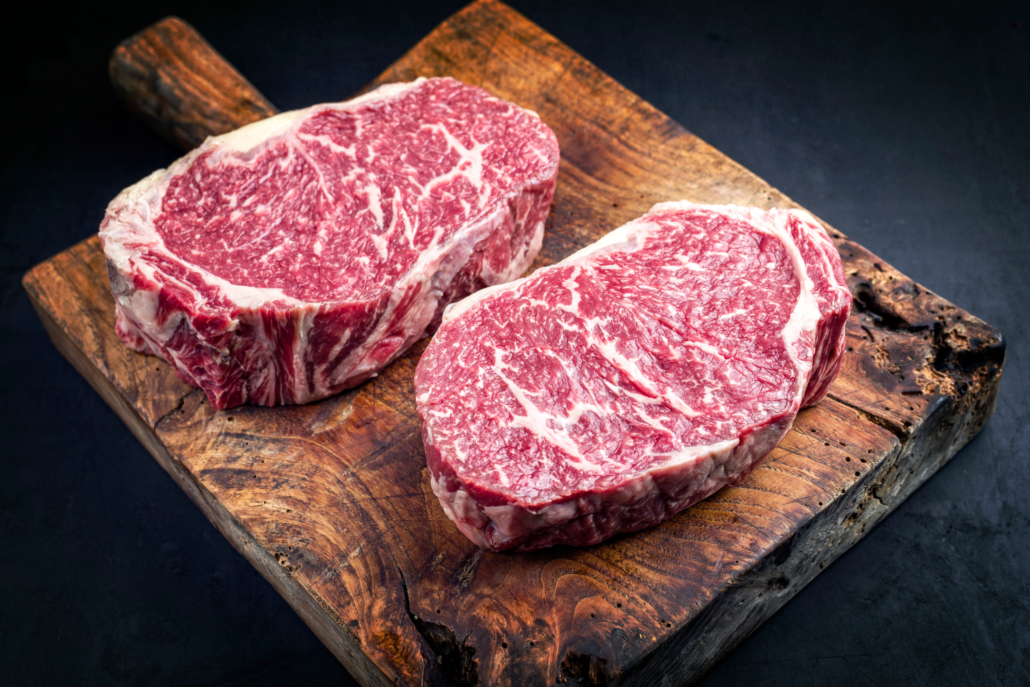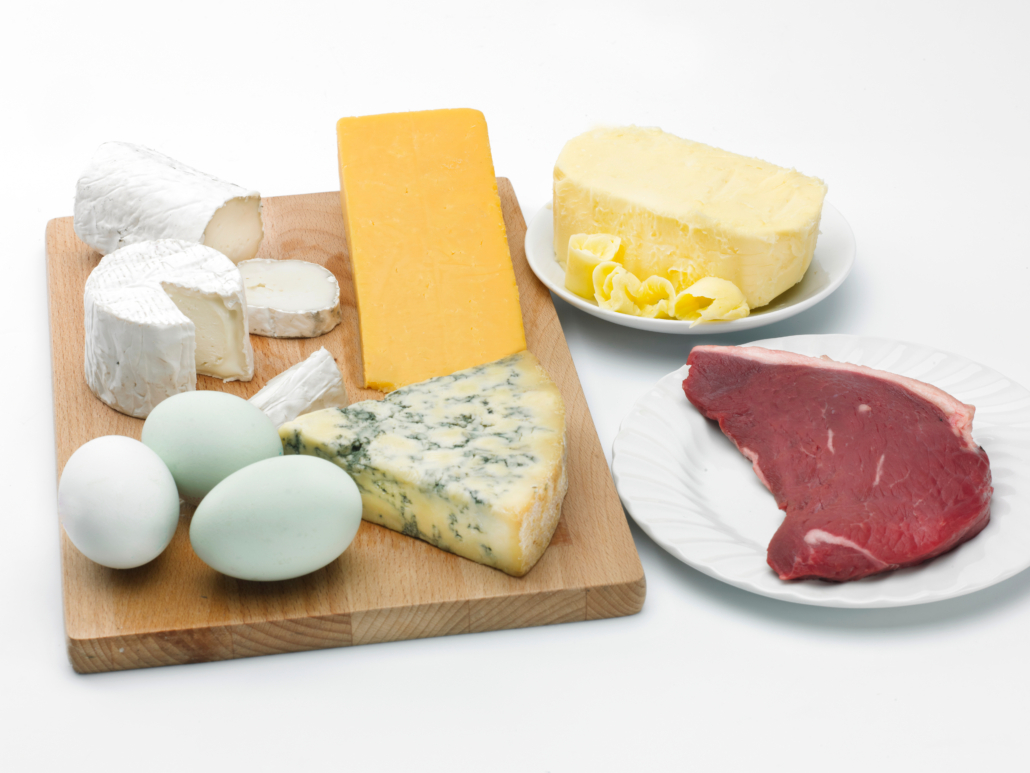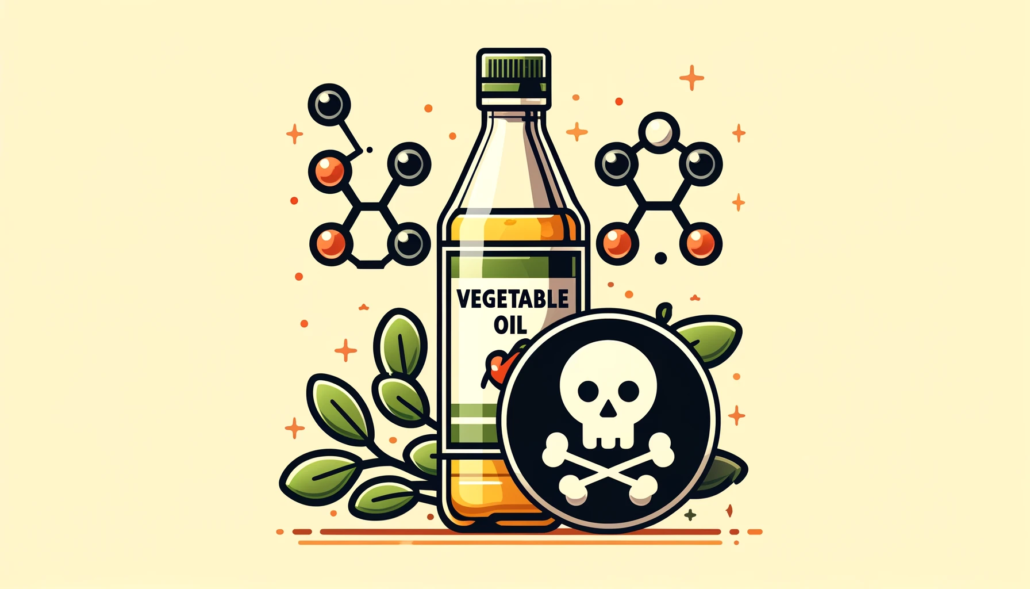We include products in articles we think are useful for our readers. If you buy products or services through links on our website, we may earn a small commission.
Zero Carb Foods List and Benefits
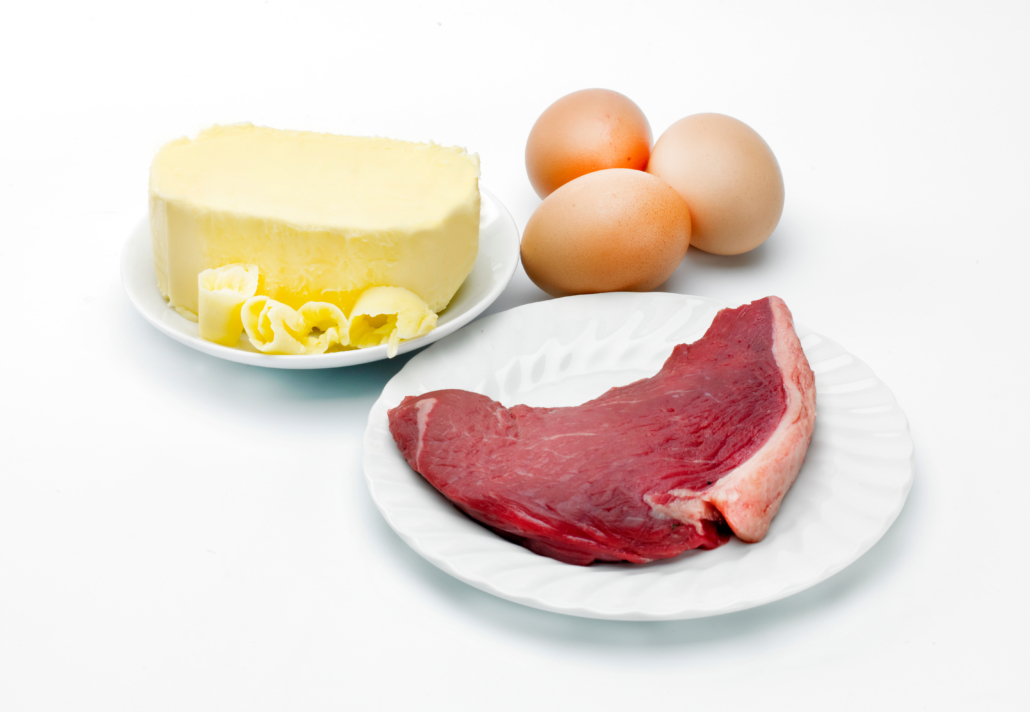
Whether you’re on a strict no carb diet, a low-carb keto diet, or just looking to reduce your carbs and increase your healthy fats and proteins, this zero carb food list will point you in the right direction.
Table of Contents
Why Eat Zero Carb Foods?
Dramatically reducing your carb intake by consuming zero carb foods high in healthy fats, proteins, and bioavailable micronutrients can provide numerous studied benefits, including:
- Reducing risk of cancer, and treating cancer
- Losing excess body fat 4
- Protecting against onset and severity of neurological disorders, including Alzheimer’s and Parkinson’s disease 4
- Reducing risk for, and treating symptoms of diabetes 5
- Supporting cardiovascular health 4 10 12 13
4 Factors Behind the Health Benefits of Zero Carb Foods
Proponents of no and low-carb high-fat diets trace these health benefits to four main factors:
- Numerous studies linking high carb diets with chronic inflammation 1 2 3
- The superior nutrient density of zero carb foods
- Eliminating plant toxins and insoluble fiber present in plant foods–nearly all plant foods have carbs
- Most people consuming a no or low carb diet eliminate all processed foods, including industrial vegetable oils, which are linked to various inflammatory diseases, cancers, and heart disease 4 5 6 7
Zero Carb Foods Align your Physiology with Ancestral Dietary Patterns
Recent research suggests that for nearly 2 million years, humans evolved on a hypercarnivorous diet of zero carb foods, especially fatty animal meats. 2
It wasn’t until the dawn of the agricultural revolution some 10-8,000 years ago that humans introduced cultivated high-carb plant foods.
The discordance between our genetic inheritance and modern lifestyles and environments may be the root cause of various diseases associated with chronic inflammation.
Why is targeting inflammation so important?
Because inflammatory diseases are the root cause of death across the globe. Yet, they are nearly non-existent in hunter-gatherer societies that consume low-carb diets high in zero carb foods. 6 7
Zero Carb Fats
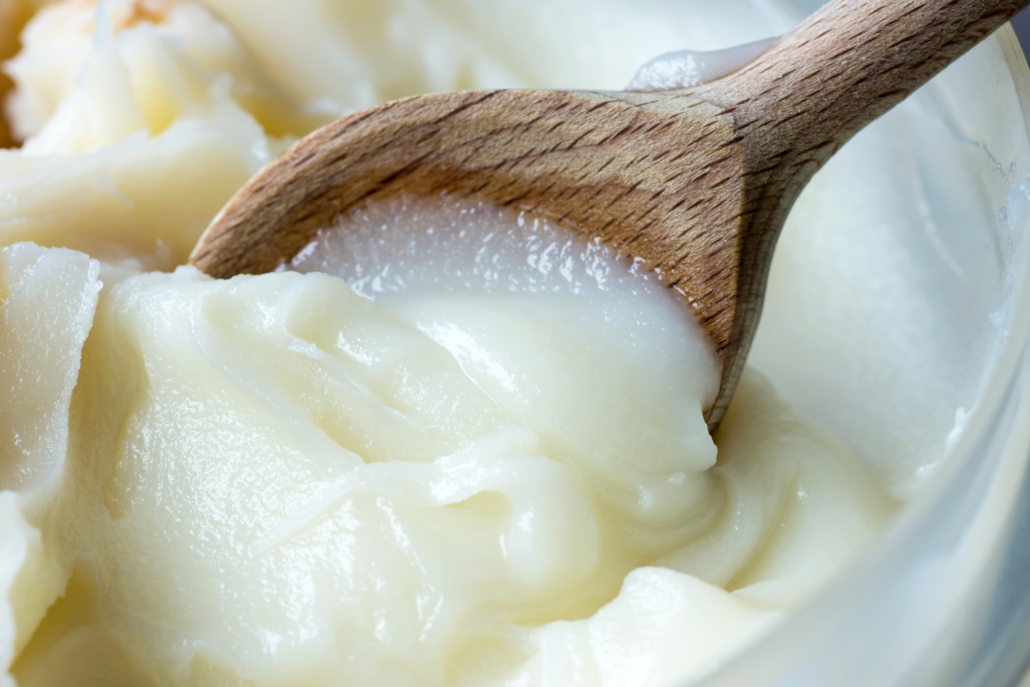
We’ll start with zero carb fats because on a no carb diet, fat is king.
Your body can only get 35-50% of calories from protein before incurring symptoms of protein poisoning. [87]
This is a potentially serious problem that occurs when the liver can’t upregulate urea synthesis it needs to process high amounts of protein. So when it comes to no carb diets, fat is your friend!
This “protein constraint” also supports the view that humans evolved on a high-fat diet, leading researchers like Amber O’Hearn to suggest that humans are not just carnivores, but lipivores.
Butter
Butter, especially from grass-fed cows, is loaded with beneficial nutrients like conjugated linoleic acid (CLA), butyrate, vitamins, and minerals.
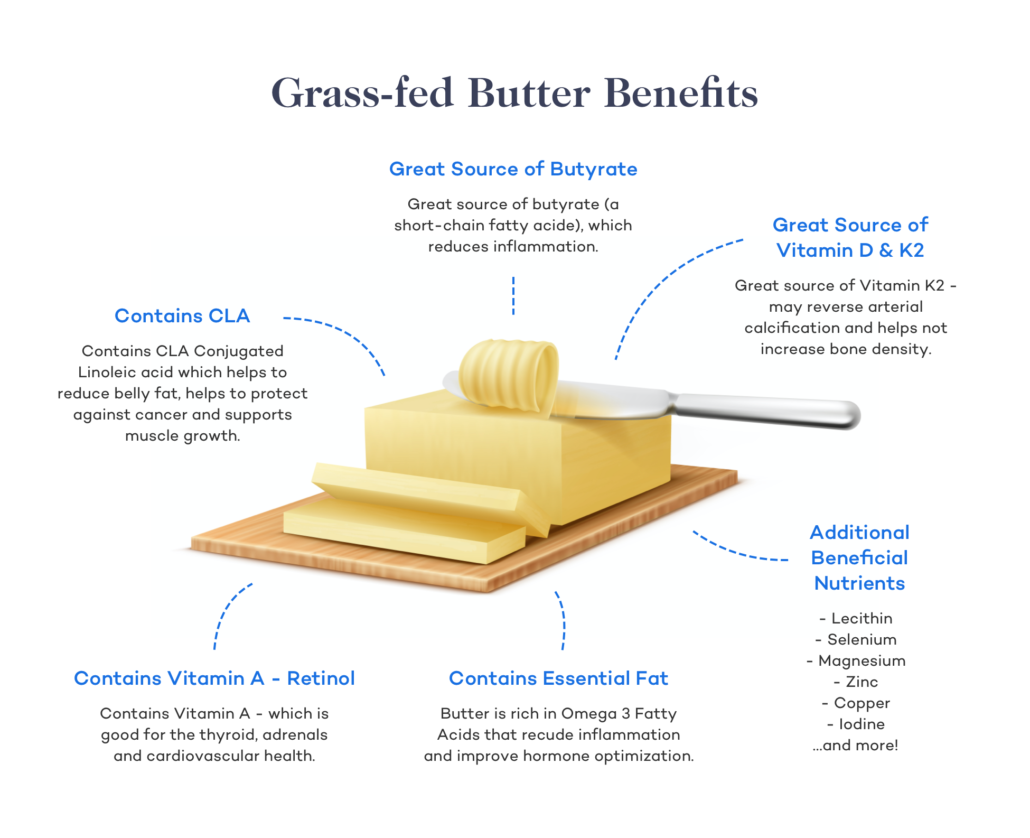
Research shows that eating butter can reduce your risk of diabetes, obesity, and heart disease.2 Butter is also linked to improved sleep 3, immune function, and fertility. [7]
Ghee
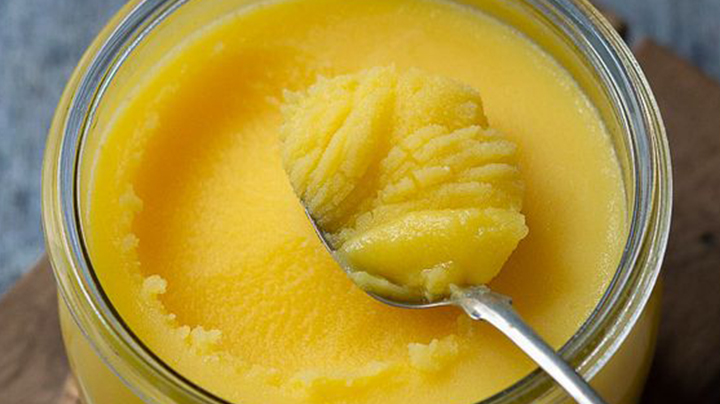
Ghee can bring all the full-fat dairy benefits of butter with the added ability to withstand higher temperatures.
With a smoke point of 465°F, ghee has an 80° higher tolerance than any other cooking oil!
And if you’re still falling for the outdated anti-saturated fat scare tactics, a 2018 study of 200 people in India found that participants who ate more ghee and less vegetable oil had healthier blood cholesterol markers. [8]
Beef Tallow
The long-chain saturated fats in beef tallow support healthy cell membranes and play a role as signaling molecules. [2]
Eating more saturated fat can saturate your cell membranes, protecting your cells from glycation, oxidation, endotoxin buildup, and other cellular stressors. [3] [4] [5]
Lard
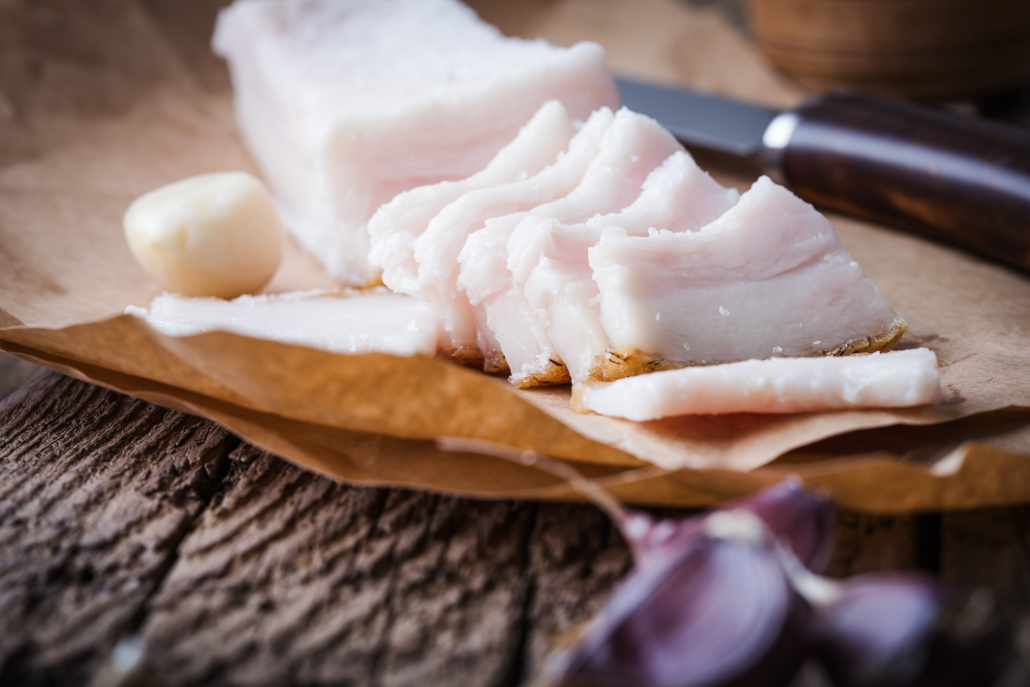
As with beef tallow, lard offers numerous essential and heat-stable fatty acids. In addition, pastured lard from pork that is allowed to bask in the sunshine is one of the best vitamin D sources on earth.
Lard from pasture-raised pigs can be as high in vitamin D as cod liver oil and may be higher in other fat-soluble vitamins. [6]
Duck Fat
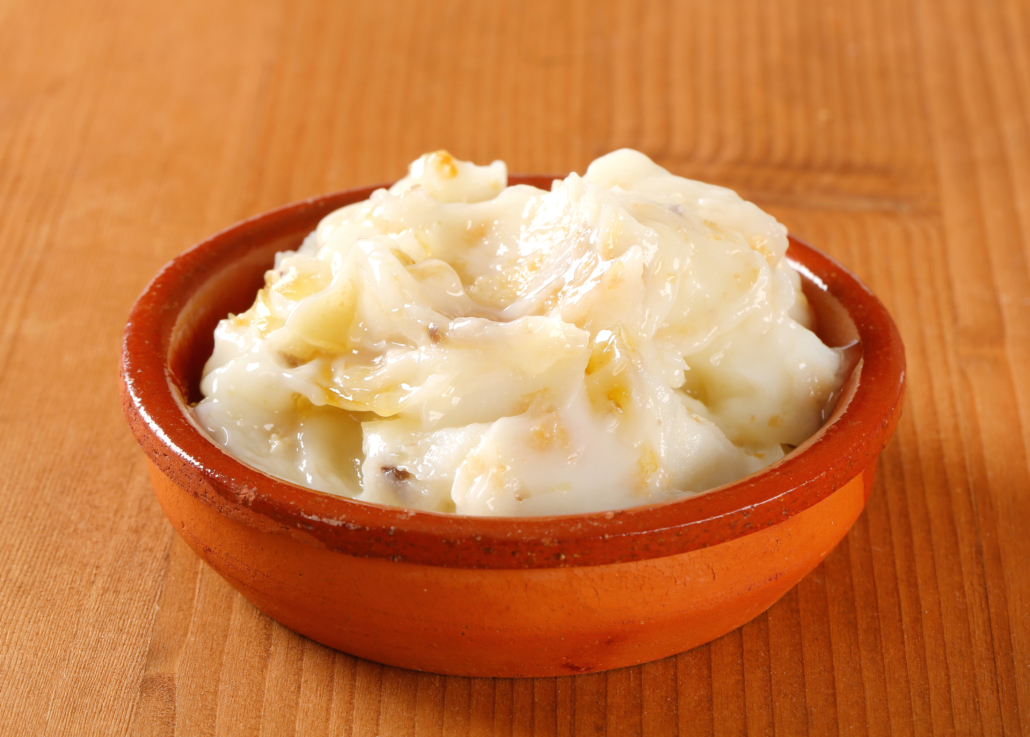
Duck fat is tasty, and studies by French researchers (of course) show that duck fat may also increase overall cardiovascular health. 2
Duck fat is also high in linoleic acid, along with certain antioxidants that can reduce premature aging and support bone health.
However, duck fat is higher in unstable PUFAs, which allows it to oxidize faster than other zero carb fats listed here.2 Oxidized fat can cause inflammation.
Heavy Cream
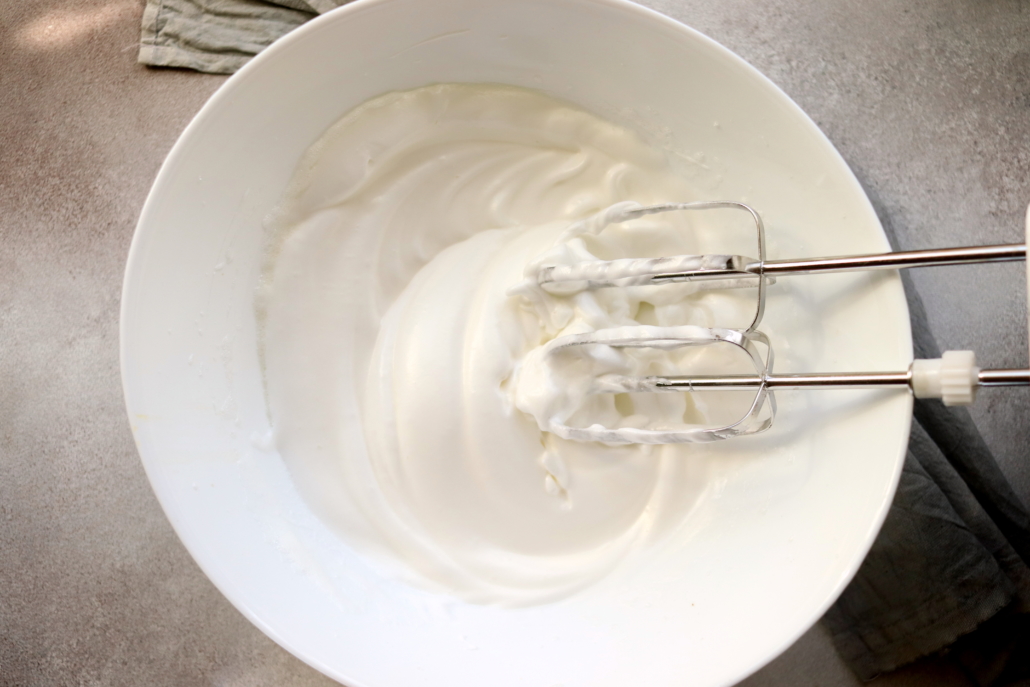
Like butter, full-fat cream is loaded with fat-soluble vitamins and minerals.
Just ⅓ cup of heavy cream offers 35% of vitamin A, 10% of vitamin D, and 7% of Vitamin D. Studies show that consuming full-fat dairy is associated with a decreased risk of obesity, type 2 diabetes, and heart disease. [9] [10] [11] [12]
For those of you still scared of full-fat dairy: A large-scale review including more than 3.6 million participants found that high-fat dairy products are not associated with any causes of mortality. [13]
Nutrition info per 1 tablespoon
| TYPE | SFA% | PUFA % | CARBS | TOTAL FAT | Smoke point | NOTES |
| BEEF TALLOW | 49.8 | 3.1 | 0g | 12.8 | 374-400 | Mild beef flavor Can be heated |
| LARD | 41 | 12 | 0g | 13g | 370-374 | Mild flavor Can be heated |
| BUTTER | 50 | 3.4 | 0g | 12g | 302–350 | Mildly Sweet Lower Heat |
| GHEE | 48 | 5 | 0g | 9g | 482 | Mild nutty flavor Can be heated |
| DUCK FAT | 25 | 13 | 0g | 13g | 375 | Rich Duck flavor Can be heated |
| HEAVY CREAM | 62 | 4 | .5g | 5.4 | NA | Sweet and rich |
| Chicken fat | 375 |
Beef
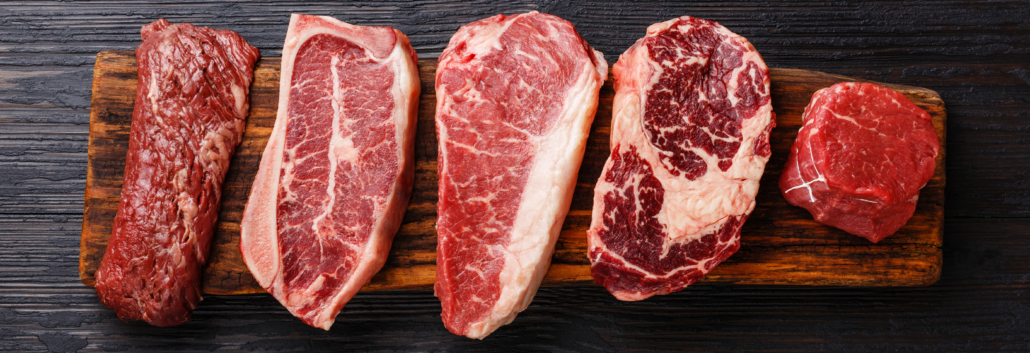
Fatty beef is loaded with nutrients in near-perfect proportions for our body’s needs and in highly bioavailable form.
In addition to healthy fats and proteins, beef provides unique compounds that are hard to find anywhere else, these include:
- Carnitine: plays a significant role in improving male fertility. [6] Reduces anemia, especially when co-occurring with kidney dysfunction. [7] Supports mitochondrial function and insulin sensitivity for people with type 2 diabetes. [8] Can prevent ischemia in cardiac muscle. [9]
- Carnosine: Anti-aging. Protects the heart and muscles[2][3]. Prevents glycation–the destructive bonding of glucose to your cells and DNA. [4] Antioxidant properties destroy free radicals and reduce damage and shortening of telomeres. [5]
- Creatine: Improves cognitive function. [10] Enhances athletic performance. [11] Alzheimer’s patients show low creatine levels. [12] improves cardiovascular performance and glycemic control. [13]
- Taurine: A powerful antioxidant. Reduces glycation, inflammation, and oxidative stress. Anti-depressive effects in animal studies.
- Zinc: protects against coronary artery disease, is essential in insulin formation, and has been shown to increase glycemic control for diabetics. [18] [19] The zinc in red meat is 400% more bioavailable than the zinc you get from grains. [15] Low zinc levels are associated with lower sperm count and erectile dysfunction. [14]
- Vitamin B12: Exclusively found in animal products. Deficiency in B12 can lead to dementia and Alzheimer’s disease. [21] Has been shown to significantly reduce depressive symptoms. [14]
- Heme Iron: Only found in beef and other red meat. Lack of iron leads to anemia. Plays a key role in immune function, cognition, and energy metabolism. [15]
Beef Nutrition
When choosing your cut of beef, it’s best to select grass-fed and finished or pasture-raised if possible.
Of course, finances, as well as general availability, can prevent this from being accessible for all. But don’t worry, standard beef “grain-fed” cows are still highly nutritious, and guess what, “grain-fed” cows actually spend the majority of their lives on open pastures eating grass. They are only fed a diet consisting partially of grain for a short period of time before slaughter.
Also, keep in mind that fattier cuts will keep you in the ideal fat-protein ratio to fuel your cells. The list below details 10 of the most popular cuts of beef.
Nutrition Info per 4 oz.
| Beef Cut | Calories | Fat | Protein | Carbs | % Calories from fat | % Calories from protein |
| Boneless short ribs | 440 | 41 | 16 | 0 | 84 | 15 |
| Beef Back Ribs | 310 | 26 | 19 | 0 | 75 | 25 |
| Ribeye | 310 | 25 | 20 | 0 | 73 | 26 |
| Porterhouse | 280 | 22 | 21 | 0 | 70 | 30 |
| Beef Brisket (fat eaten) | 374 | 29 | 26 | 0 | 70 | 30 |
| Chuck Eye Steak | 374 | 29 | 26 | 0 | 70 | 30 |
| 80/20 Ground Beef | 307 | 19.6 | 30.5 | 0 | 59 | 41 |
| Skirt Steak | 265 | 16.5 | 27 | 0 | 58 | 42 |
| Flank Steak | 200 | 8 | 32 | 0 | 36 | 64 |
Let’s take a look at the nutrient profile of one of the most nutritious, fattiest, and tastiest cuts of beef– the ribeye
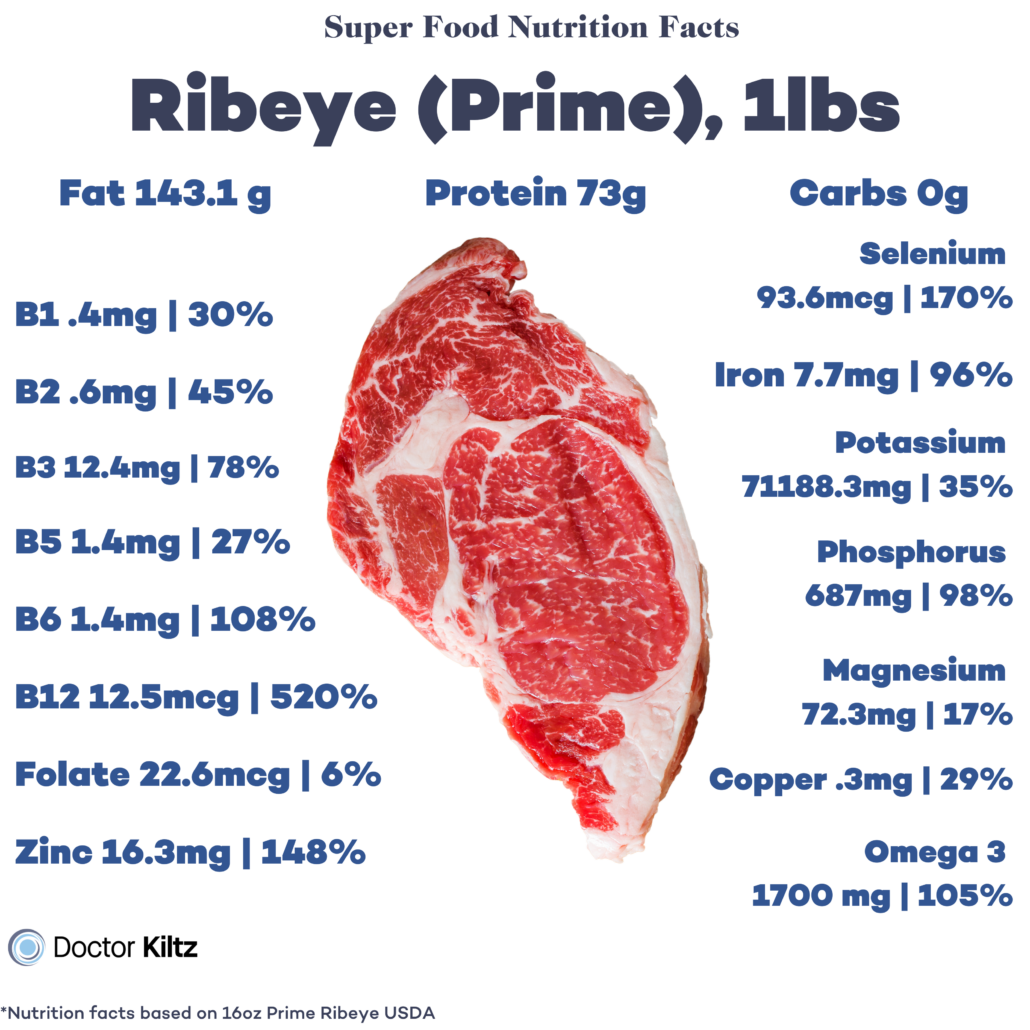
| NUTRIENT | 226G RIB EYE | RECOMMENDED DAILY VALUE (RDV) | % RDV |
| CALORIES | 655 cal | 2500 | 18.6% |
| PROTEIN | 54g | 60g (Standard Diet, not Keto) | 90% |
| FAT | 50g | 30g (Standard Diet, not Keto) | 166% |
| SATURATED FAT | 23g | 20g (Standard Diet, not Keto) | |
| MONOUNSATURATED FAT | 25g | ||
| CARBOHYDRATES | 0g | 1200g (Standard Diet, not Keto) | 0% |
| NIACIN (B-3) | 13.5mg | 16mg | 30% |
| B-6 | 1.4mg | 2mg | 70% |
| SELENIUM | 56.25 mcg | 67mcg | 84% |
| IRON | 3.24mg | 20mg | 16% |
| MAGNESIUM | 144mg | 420mg | 34% |
| ZINC | 9.45mg | 11mg | 86% |
| POTASSIUM | 666mg | 4000mg | 17% |
| PHOSPHORUS | 400mg | 700mg | 57% |
Pork
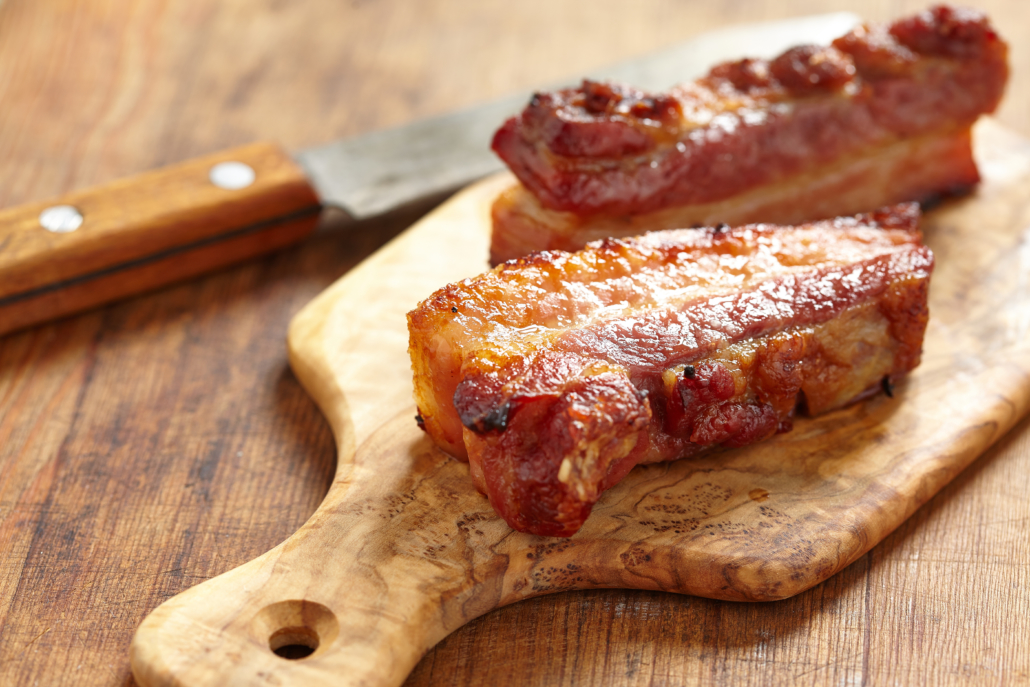
On no and low-carb diets, ruminant animals like beef and lamb are given a primary role, while pork is often viewed as a second or third option. Some of the reasons for this include:
- Pork has less nutrient density than most cuts of red meat from ruminant animals
- Pigs can’t metabolize the inflammatory omega-6 fats they get from their feed, into omega-3s, but ruminant animals can
- It can be difficult to find pasture-raised pork and much easier to find grass-fed lamb, beef, and bison
But none of these points are reasons to leave pork out. Pork is delicious and loaded with healthy fats and proteins. It also offers a slightly different micronutrient profile which can be helpful in ensuring all your vitamin and mineral needs are met.
Choline in Pork
Choline is one of the lesser-known, but important compounds in pork, and bacon is one of the top five sources of dietary choline.
Choline maintains brain and nervous system function, regulates mood, and aids in memory. It also plays a key role in the formation of membranes around cells. [17]
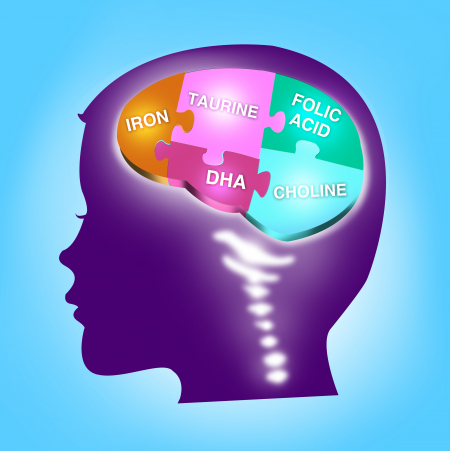
This unsung nutrient also offers greater antioxidant activity than Vitamin E. It’s the reason why lard resists rancidity–choline neutralizes the free radicals that would otherwise oxidize the fat. [18] Oxidized fat can cause inflammation when consumed.
Nutritional information per 4 oz.
| Pork Cut | Calories | Fat | Protein | % Calories Fat | % Calories Protein |
| Pork Belly | 588 | 60 | 10.4 | 92 | 7 |
| Baby back ribs | 315 | 27 | 18 | 77 | 23 |
| Pork Hocks | 285 | 24 | 17 | 76 | 24 |
| Shoulder | 285 | 23 | 19 | 73 | 27 |
| Bacon | 600 | 47.2 | 41.9 | 71 | 28 |
| Butt | 240 | 18 | 19 | 68 | 32 |
| Leg Ham | 305 | 20 | 30.4 | 59 | 40 |
| Loin | 265 | 15.5 | 30.8 | 53 | 46 |
| Chop | 241 | 12 | 33 | 45 | 55 |
| Tenderloin | 158 | 4 | 30 | 23 | 76 |
Pork Belly Highlight
On zero carb diet, it’s best practice to choose the fattiest cuts, and they don’t get fattier than pork belly. Similar to bacon, pork belly comes from the hog’s underside.
You can serve this boneless cut fresh, unlike bacon, which is cured or smoked and therefore contains nitrites.
Fresh pork belly is loaded with quality fat, protein, and fat-soluble vitamins and minerals. [19]
| PORK BELLY NUTRITIONAL CONTENT PER 224G | AMOUNT | % RDA |
| FAT | 89g | N/A |
| SATURATED FAT | 32g | N/A |
| MONOUNSATURATED FAT | 42g | N/A |
| POLYUNSATURATED FAT | 9g | N/A |
| OMEGA 3 ALA | 900mg | 100% |
| Protein | 20g | |
| CHOLINE | 113mg | 21% |
| VITAMIN B12 | 1.8mcg | 75% |
| PANTOTHENIC ACID (B5) | 2.5mg | 50% |
| NIACIN (B3) | 9mg | 56% |
| RIBOFLAVIN (B2) | .4mg | 32% |
| THIAMIN (B1 | .7mg | 56% |
| COPPER | .2mg | 22% |
| PHOSPHOROUS | 300mg | 24% |
| SELENIUM | 23mcg | 42% |
| ZINC | 1.7mg | 16% |
| VITAMIN D | 1.8mcg | 9% |
| IRON | .9mg | 5% |
Lamb
Lamb is a delicious nutrient-loaded zero carb food. As with most other meats, lamb is rich in protein and healthy fats, along with bioavailable vitamins and minerals.
Lamb offers meat-specific compounds like taurine and creatine and other vital nutrients, including:
- Vitamin B12: Important for brain function and blood formation.
- Zinc: An essential mineral for the synthesis of insulin and testosterone hormones.
- Niacin ( B3). Inadequate niacin has been linked to a greater risk of heart disease [20]
- Glutathione: An antioxidant with numerous positive impacts, including reducing insulin resistance, reducing oxidative damage in children with autism, reducing risk of autoimmune disease, and reducing symptoms of Parkinson’s disease. 2
- Conjugated linoleic acid (CLA). Found in higher levels in lamb than any other food, this is a healthy trans fat, not to be confused with unhealthy trans fats made from processed vegetable oils like margarine. CLA has been shown to boost the immune system, strengthen bones, support a healthy heart, and aid in fat loss. [21]
Nutrition information per 4 oz.
| Lamb Cut | Calories | Fat | Protein | Carbs | % Calories from Fat | % Calories from Carbs |
| Rib Chop | 407 | 34 | 24 | 0 | 75 | 25 |
| Shoulder | 277 | 22 | 20 | 0 | 70 | 30 |
| Loin Chop | 330 | 23 | 26 | 0 | 65 | 35 |
| Leg | 292 | 18.7 | 29.3 | 0 | 59 | 41 |
| Shank | 276 | 14.7 | 32 | 0 | 52 | 48 |
Lamb Chops Highlight
Let’s take a closer look at the nutrition facts for one of the most popular and delicious cuts of lamb–the chop or rack:
| Lamb Chops/Rack | ||
| Nutrients per 4 oz | Amount | % RDA |
| Fat | 22g | |
| Saturated Fat | 11g | |
| Trans Fat (CLA) | 1.5g | |
| Cholesterol | 92mg | |
| Protein | 30g | |
| B12 | 1.7µg | 72% |
| B3 | 8.9mg | 56% |
| B6 | .6mg | 46% |
| B2 (RIboflavin) | .4mg | 28% |
| B5 | .7mg | 13% |
| B1 | .2mg | 13% |
| Selenium | 15.2µg | 28% |
| Zinc | 3.3mg | 23% |
| Phosphorus | 216 mg | 22% |
| Copper | .1mg | 15% |
| Iron | 2.4mg | 13% |
Poultry
Though poultry is zero carb food, it usually only accounts for a relatively small portion of the total caloric intake on no carb diets.
The main drawback to poultry is that it’s generally lean compared to ruminants, pork, and even many seafood options.
It’s important to remember that on a zero carb diet your body relies on fat, not protein for fuel. To provide the necessary fat, aim for at least a 70-30 fat-to-protein ratio.
A quick tip for choosing the most nourishing poultry is to choose cuts that keep the skin on. You can always cook your poultry in added healthy fats like duck and beef tallow. There is also one part of poultry that is always encouraged; chicken liver.
| Chicken | Calories | Fat | Protein | Carbs | % Fat | % Carbs |
| Chicken Wings | 288 | 19 | 27 | 0 | 60 | 40 |
| Chicken thigh (skin on) | 275 | 17.6 | 28.3 | 0 | 58 | 41 |
| Chicken Leg (skin on) | 275 | 15.2 | 29.4 | 0 | 54 | 46 |
| Poultry | Calories | Fat | Protein | Carbs | % Fat | % Carbs |
| Goose | 340 | 24.9 | 28.5 | 0 | 66 | 34 |
| Game Hen | 220 | 16 | 19 | 0 | 65 | 35 |
| Chicken Wings | 288 | 19 | 27 | 0 | 60 | 40 |
| Chicken thigh (skin on) | 275 | 17.6 | 28.3 | 0 | 58 | 41 |
| Duck | 228 | 13.9 | 26.3 | 0 | 55 | 46 |
| Chicken Leg (skin on) | 275 | 15.2 | 29.4 | 0 | 54 | 46 |
| Turkey | 175 | 9.9 | 21 | 0 | 51 | 49 |
| Chicken Breast (skin on) | 200 | 8.4 | 31 | 0 | 38 | 62 |
| Chicken Breast (skinless) | 138 | 4 | 25 | 0 | 26 | 72 |
Chicken Wings Highlights
Let’s look at the profile of one of the most nutrient-dense varieties of poultry on a carnivore diet:
| Chicken Wings | ||
| Nutrients per 4 oz | Amount | % RDA |
| Fat | 22g | |
| Saturated Fat | 7g | |
| Cholesterol | 111mg | |
| Protein | 30.4g | |
| Vitamin B6 | 0.5m | 41% |
| Vitamin B3 | 5.7mg | 36% |
| Choline | 82 mg | 15% |
| Vitamin B12 | 0.3µg | 10% |
| Vitamin B2 (Riboflavin) | 0.1mg | 8% |
| Selenium% | 17.6µg | 32% |
| Phosphorus | 123.0mg | 12% |
| Zinc | 1.2mg | 9% |
Fish
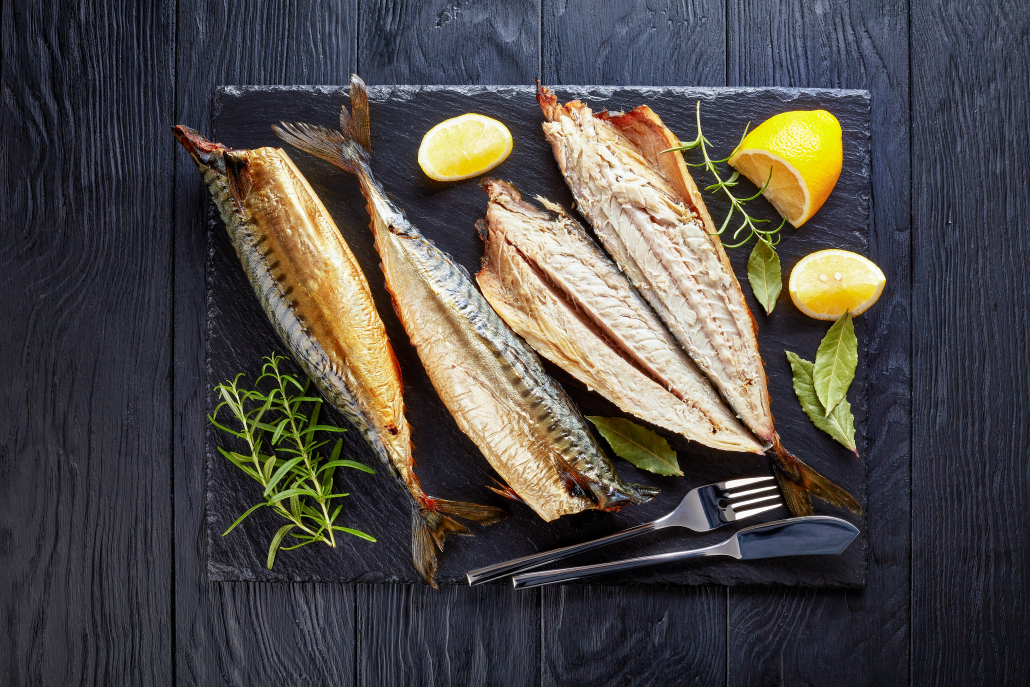
Fish are one of the most nutrient-dense classes of food on earth. Yet on a no carb diet, it’s best to let fish play a supporting role to ruminant meats.
This is because most fish are relatively lean. Making lean protein the center of your diet can lead to fat shortages and even protein poisoning. There’s also the issue of fish toxicity. Almost all fish contain some amount of toxic compounds from pollution. 4 5
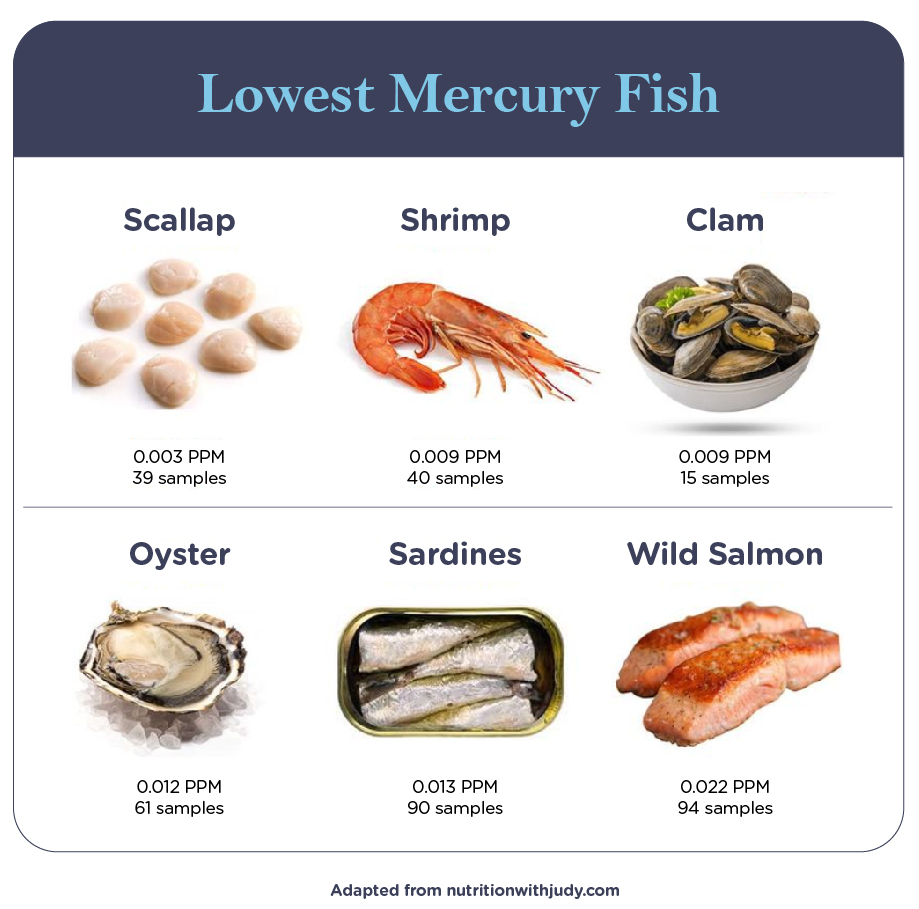
Interestingly, most ancestral cultures that ate a lot of seafood still got most of their fat from land-based animals. Or in the case of the Inuit, from fatty seafaring mammals.5
That said, fish are a welcome addition to any zero carb food list. Below is a list of some of the most popular varieties.
Nutrition info per 100g
| Type of Fish | Calories | Fat | Protein | Carbs | % Calories from fat | % Calories from protein |
| Mackerel | 290 | 20.3 | 27 | 0 | 63 | 37 |
| Anchovies | 256 | 15.9 | 28 | 0 | 56 | 44 |
| Farmed Salmon | 234 | 14 | 25 | 0 | 56 | 44 |
| Wild King Salmon | 195 | 13 | 22 | 0 | 54 | 46 |
| Sardines | 139 | 7.5 | 18 | 0 | 49 | 52 |
| Arctic Char | 208 | 10 | 29 | 0 | 43 | 56 |
| Halibut | 155 | 3.5 | 30.7 | 0 | 20 | 79 |
| Seabass | 135 | 3 | 27 | 0 | 20 | 80 |
| Cod | 113 | 1 | 26 | 0 | 8 | 92 |
| Tuna (Yellowfin) | 150 | 1.5 | 34 | 0 | 9 | 91 |
| Tuna (canned) | 123 | .8 | 27.5 | 1.5 | 6 | 89 |
King Salmon Highlight
King Salmon, AKA chinook salmon, is the largest of the Pacific salmon species. They can reach over 100 pounds!
It’s also the highest in fat of all wild salmon species. Widely considered the most delicious variety of salmon, with a smooth buttery texture and mild flavor, it also offers the highest amount of B vitamins.
| King Salmon (Wild) | Amount per 4 oz. | % RDA |
| Fat | 12g | |
| Saturated Fat | 2g | |
| Cholesterol | 61mg | |
| Protein | 20g | |
| Vitamins | ||
| Vitamin B12 | 7.4µg | 308% |
| B3 | 8.4mg | 53% |
| B6 | .3mg | 21% |
| B5 | 1gm | 21% |
| Vitamin A | 453.0IU | 15% |
| B1 | .2mg | 13% |
| B2 | .2mg | 13% |
| Vitamin E | 1.5mg | 10% |
| Minerals | ||
| Selenium | 31.0µg | 56% |
| Phosphorus | 208.0mg | 21% |
| Potassium | 370.0mg | 10% |
| Magnesium | 24.0mg | 6% |
Seafood
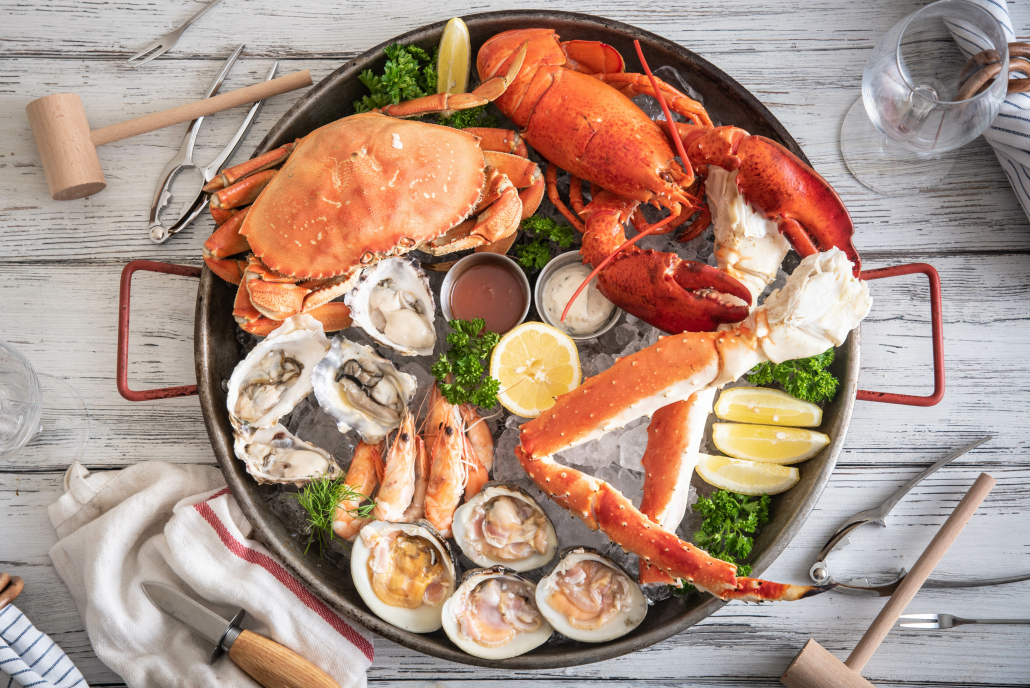
Seafood is an excellent way to add variety to your zero carb food list, both in terms of taste and nutrients.
Oysters, for instance, are fantastic sources of zinc.
While many types of seafood with orange pigment, like lobster, roe (caviar), and shrimp, contain a powerful antioxidant compound called Astaxanthin. [22] [23] This compound may be 6,000 times more potent than vitamin C, and has been shown to reduce oxidative stress and protect the liver. [24]
| Type of Seafood | Calories | Fat | Protein | Carbs | % Calories from fat | % Calories from protein | % Calories from carbs |
| Salmon Caviar (Roe) | 260 | 14 | 29 | 2.9 | 45 | 52 | 3% |
| Oysters | 58 | 1.9 | 6.5 | 3.1 | 29 | 33 | 28 |
| Mussels | 97 | 2.8 | 13.5 | 4.5 | 26 | 56 | 19 |
| Shrimp | 135 | 2.0 | 25.8 | 1.7 | 18 | 78 | 4 |
| Crab | 107 | 2.0 | 22 | 0 | 17 | 82 | 0 |
| Lobster | 116 | 1.8 | 25 | 0 | 14 | 86 | 0 |
| Clams | 82 | 1.1 | 15 | 3 | 12 | 73 | 15 |
| Scallops | 97 | 1.0 | 19 | 3 | 9 | 78 | 12 |
Salmon Roe Highlights
Also known as Ikura, red caviar, and salmon caviar, salmon eggs are a true superfood. They’re loaded with bioavailable vitamins A, B, D, and vitamin K2, zinc, iodine.
Their number one claim to fame is their neuroprotective and brain-building omega-3 fatty acids EPA and DHA. [25]
With all these nutrients its no surprise that salmon roe has been linked to numerous health benefits, including:
- Protection against Alzheimer’s and dementia
- Healthy infant brain development
- Enhanced fertility for men and women
- Enhanced cognition
- Protection against depression
- Reduced inflammation
- Heart health
- Antioxidant protection
- Improved immune system
You can learn much more about each of these benefits here.
Salmon roe nutrition per 100g
| NUTRIENTS | AMOUNT |
| CALORIES | 250 kcal |
| CARBOHYDRATE | 2.90 g |
| FIBER | 0 g |
| SUGARS | 0 g |
| FAT | 14.0 g |
| SATURATED FAT | 2.04 g |
| MONOUNSATURATED FAT | 4.13 g |
| POLYUNSATURATED FAT | 4.12 g |
| OMEGA-3 FATTY ACIDS | 3.50 g |
| OMEGA-6 FATTY ACIDS | 0.31 g |
| PROTEIN | 29.20 g |
Vitamins in salmon roe per 100g
| VITAMIN | AMOUNT | % DV |
| COBALAMIN (B12) | 20.0 mcg | 333 % |
| VITAMIN E | 10mg | 66% |
| VITAMIN D | 232 IU | 58 % |
| CHOLINE | 247.5 mg | 45 % |
| PANTOTHENIC ACID (B5) | 3.50 mg | 35 % |
| VITAMIN C | 16 mg | 26 % |
| RIBOFLAVIN (B2) | 0.36 mg | 21.2 % |
| PYRIDOXINE (B6) | 0.32 mg | 16.0 % |
| VITAMIN E | 2.68 mg | 13.3 % |
| FOLATE | 50.0 mcg | 12.5 % |
| VITAMIN A | 91 mcg RAE | 10.1 % |
| THIAMIN (B1) | 0.14 mg | 9.3 % |
| NIACIN (B3) | 0.40 mg | 2.0 % |
| VITAMIN K | 0.73 mcg | 0.9 % |
Minerals in salmon roe per 100g
| Selenium | 65.5 mcg | 93.6% |
| Magnesium | 300 mg | 75% |
| Iron | 11.88 mg | 66% |
| Sodium | 1500 mg | 62.5% |
| Phosphorus | 390 mg | 39% |
| Calcium | 275 mg | 27.5% |
| Zinc | .95 mg | 6.3% |
| Copper | .11 mg | 5.5% |
| Potassium | 181 mg | 5.2% |
Organ Meats
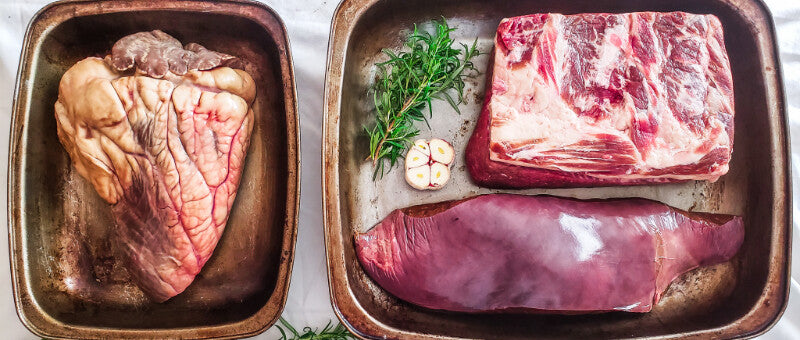
Organ meats are among nature’s original superfoods. That’s because they’re even richer than muscle meats in many of the most important nutrients.
Different organ meats have varying micro and macronutrient blends, which means that diversifying your nutrient intake is as simple as trying different organ meats. [26]
Organ meats may provide direct benefits to the corresponding organs in your own body. For example, beef kidney contains special peptides that may benefit the health of our own kidneys. [27]
Beef brain is one of the richest sources of cholesterol–the perfect fuel source for our energy-hungry brains. [28]
It’s worth noting that some organ meats contain extremely low amounts of carbs (.5-2 grams per serving). Even though they may not be true zero carb foods, they are so remarkably nutritious that it would be ridiculous to eliminate them from a no and low-carb diet.
Some of our favorite organ meats include:
- Liver
- Heart
- Kidney
- Sweetbread
- Brain
- Spleen
- Tripe
| Nutrients | Liver | Heart | Kidney | Sweet- breads | Brain | Spleen | Tripe | RDA |
| Calories | 135 | 112 | 99 | 143 | 140 | 100 | 371 | – |
| Fat | 3.6 | 3.9g | 3.1g | 10.3 | 10 | 3g | 26g | – |
| Protein | 20.4 | 17.7 | 17.4 | 10.9 | 11 | 18g | 32g | – |
| Net Carbs | 3.4 | .1g | .3g | 1.1g | 1g | 0g | 0g | – |
| Vitamins | ||||||||
| Vitamin A | 4968μg | 0 | 419μg | – | 7μg | – | – | 900mcg |
| Riboflavin (B2) | 2.8mg | .9 | 2.8mg | .3mg | .2mg | .4mg | .359mg | 1.3mg |
| B6 | 1mg | .3mg | .7mg | .4mg | .2mg | .1mg | .162mg | 1.3-1.7mg |
| Folate (B9) | 290μg | 3μg | 98μg | 6μg | 3μg | – | 11mcg | 400mcg |
| B12 | 59.3μg | 8.6μg | 27.5μg | 15.2μg | 9.5μg | 5.7μg | 4.19mcg | 2.4mcg |
| Vitamin C | 1.3mg | 2mg | 9.4mg | 3.3mg | 10.7mg | 45.5mg | 1.3mg | 60mg |
| Vitamin D | 1.2μg | – | 1.1μg | – | – | – | .4mcg | 100mg (4000 IU) |
| Vitamin E | 0.4mg | .2mg | .2mg | – | 1mg | – | .39mg | 1000 mg (1500IU) |
| Vitamin K | 3.1μg | – | – | – | – | – | 1.2mcg | 120mcg |
| Minerals | ||||||||
| Calcium | 5mg | 7mg | 13mg | 9mg | 43mg | 9mg | 77mg | 1300mg |
| Iron | 4.9mg | 4.3mg | 4.6mg | 2.2mg | 2.6mg | 44.6mg | 3.21mg | 18mg |
| Magnesium | 18mg | 21mg | 17mg | 15mg | 13mg | 22mg | 29mg | 420mg |
| Phosphorus | 387mg | 212mg | 257mg | 386mg | 362mg | 296.0 | 211mg | 1250mg |
| Zinc | 4mg | 1.7mg | 1.9mg | 1.4mg | 1mg | 2.1mg | 253mg | 11mg |
| Copper | 9.8 | .4mg | .4mg | .2mg | .3mg | .2mg | .22mg | .9mg |
| Manganese | .3mg | – | .1mg | – | – | .1mg | – | 2.3mg |
| Retinol | – | – | 419μg | – | – | – | – | – |
| Selenium | 39.7mg | 21.8μg | 141μg | 26μg | 21.3μg | 62μg | 26.1mcg | 55mcg |
| Lycopene | – | – | 20μg | – | – | – | – | – |
| Thiamine | .2 | .2mg | .4mg | .1mg | .1mg | – | – | .9-1.2mg |
| Choline | 333.3mg | – | – | – | – | – | – | 550mg |
Beef Liver Highlights
Beef liver is one of the most nutrient-dense of all the organ meats. It’s also one of the easiest organs to start off with.
Liver is so high in certain fat-soluble vitamins, in fact, that it’s better viewed as a supplement than as an everyday food. You only need to eat a modest amount, once or twice a week, to get its complete benefits. [29]
Both beef liver and chicken liver are chock-full of nutrients, including CoQ10. CoQ10 serves many important functions like generating energy in your cells by making adenosine triphosphate (ATP).
It’s also a powerful antioxidant with evidence linking CoQ10 to the prevention of cancer. [30] CoQ10 may also be the elusive anti-fatigue factor in liver. And for the men out there, it’s been shown to increase sperm motility. [31] [32]
Bone Broth and Bone Marrow
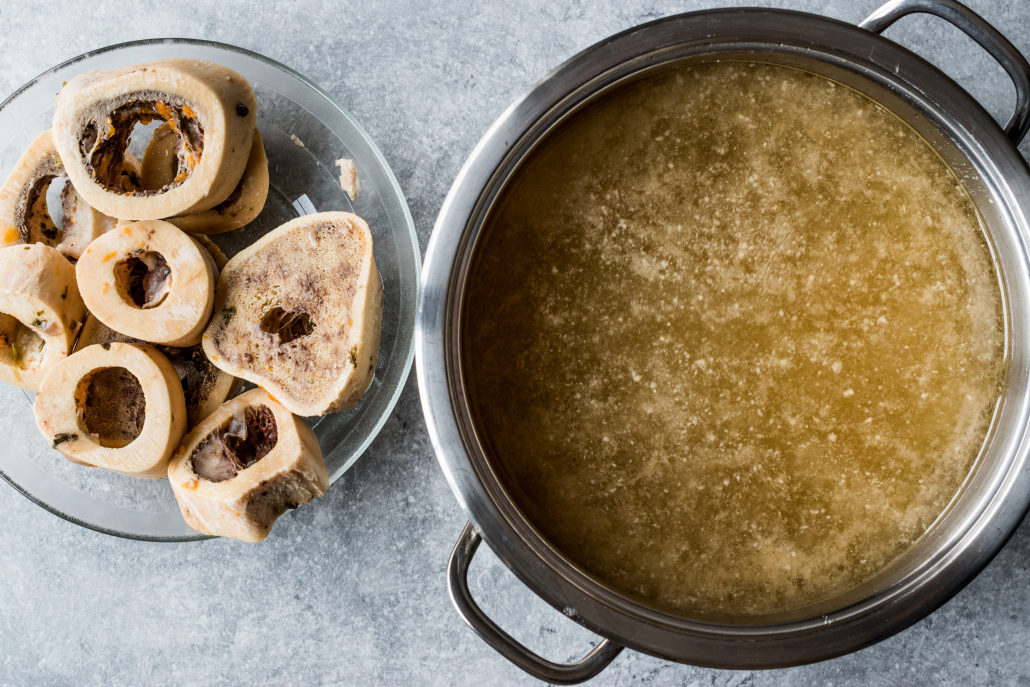
Bone broth and bone marrow have both staple foods around the world since time immemorial.
Now, modern nutritional research has something to tell us about why we chose and stuck with these foods. They’re loaded with essential healthy fats and protein, and they’re nature’s best source of glycine, the most anti-inflammatory, anti-aging amino acid. [33]
Bone broth and bone marrow are also excellent sources of collagen, which supports healthy skin and bones. Research has found that consuming collagen can improve skin health and reduce aches and pains. [34
Bone Broth Protects Against Increased Methionine From Meat
One of the criticisms of zero carb diets high in meat comes from people who think red meat causes cancer.
Though red meat does contain a specific amino acid called methionine that has been linked to cancer, there have been no links between consuming fresh red meat and increased cancer risks.
Studies on methionine have found that in order to increase base levels of homocysteine (the key amino acid synthesized from methionine associated with disease), you need 500% of the normal daily intake. [2] [3] [4]
Moderate methionine doses, like you get when consuming a zero carb diet, do not increase base levels of homocysteine. [5] Put simply, there is no convincing evidence showing that for healthy people, a diet high in zero carb fresh meat increases base levels of homocysteine.
The reality is that meat-derived amino acids themselves are not likely associated with disease. Rather, when these amino acids are consumed in the context of a broadly unhealthy high-carb Standard American diet and lifestyle that entails excess energy from grains, added sugars, and protein, combined with a lack of physical activity.
If you’re active and enjoying a well-formulated high-fat, moderate-protein low carb diet, there’s likely nothing to worry about.
If you’re still worried about your methionine consumption, bone broth may be the answer you’ve been looking for. It’s one of the richest sources of glycine and amino acid that has been shown to mitigate the effects of methionine.
| Nutrient | 100g of Bone Marrow | Recommended Daily Value (RDV) | %RDV |
| Calories | 770 calories | 2,500 calories | 30% |
| Protein | 7 grams | 50 g (standard diet, not keto) | 14% |
| Fat | 80 grams | 30 g (standard diet, not keto) | 266% |
| Carbohydrates | 0 mg | 120 g (standard diet, not keto) | 0% |
| Niacin | 0.4 mg | 16 mg | 3% |
| Selenium | 20 mcg | 70 mcg | 36% |
| Iron | 0.8 mg | 20 mg | 4% |
| Magnesium | 1.8 mg | 420 mg | 0.4% |
| Zinc | 0.1 mg | 11 mg | 1% |
| Potassium | 137 mg | 4000 mg | 5% |
| Phosphorus | 7 mg | 700 mg | 1% |
Eggs
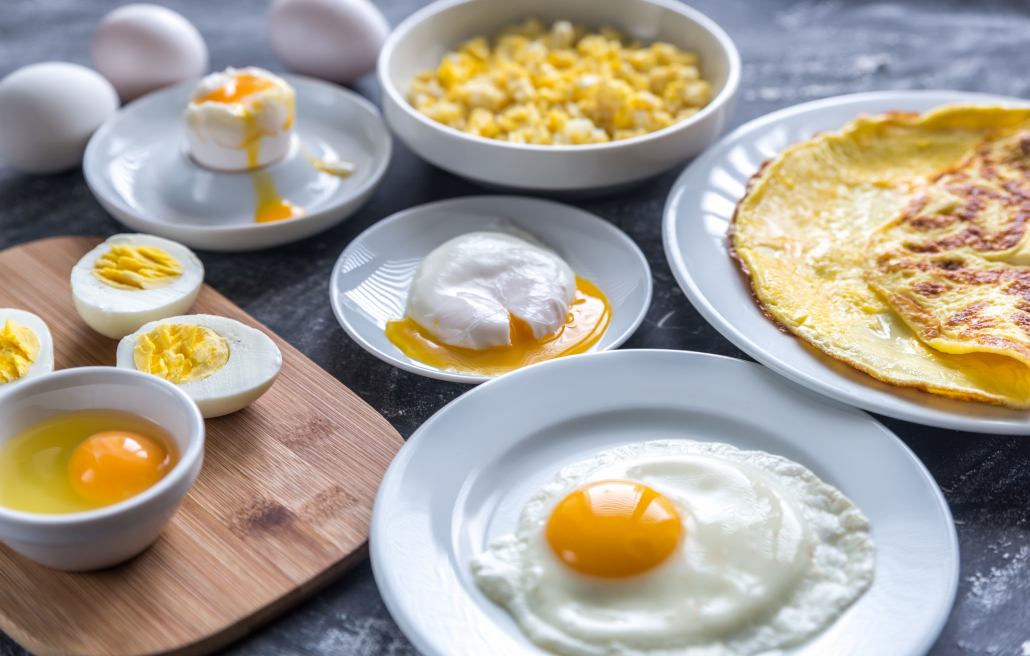
With a plethora of healthy fats, proteins, vitamins, and minerals, eggs are a zero carb food that contains almost everything your body needs to thrive.
The choline content of eggs also makes them great for pregnant women and women trying to become pregnant.[35]
Zero Carb Foods: The Takeaway
People consuming no carb, low-carb, and carnivore diets focus on zero carb foods.
Popular zero carb foods include:
- Red meat like steak, bison, lamb, and pork
- Animal fats like butter, tallow, and lard
- Fish and seafood like salmon and oysters
Eliminating carbs may provide numerous health benefits linked to reducing inflammation and improving heart health.
But choosing zero carb foods isn’t just about eliminating carbs. Just as importantly, these nutrient-dense whole foods provide your body with complete macro and micronutrients in the most bioavailable forms and in near-perfect proportions for your body’s needs.












